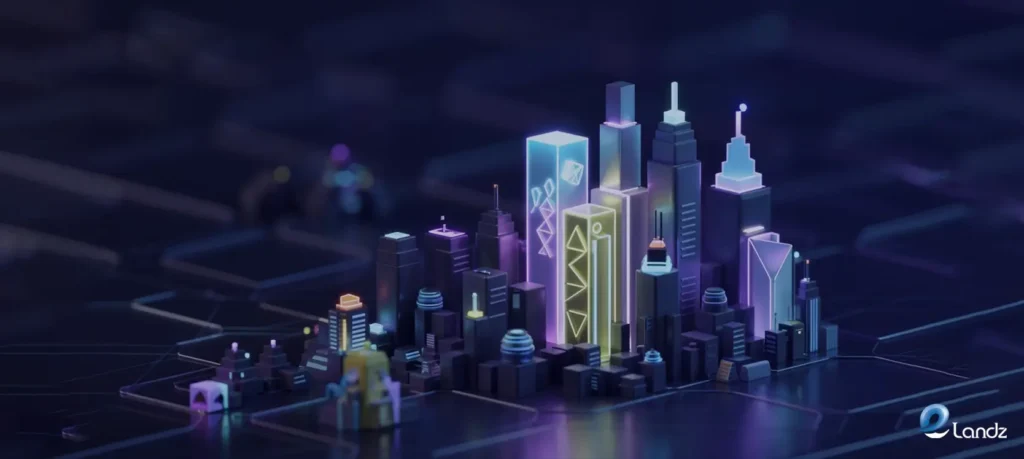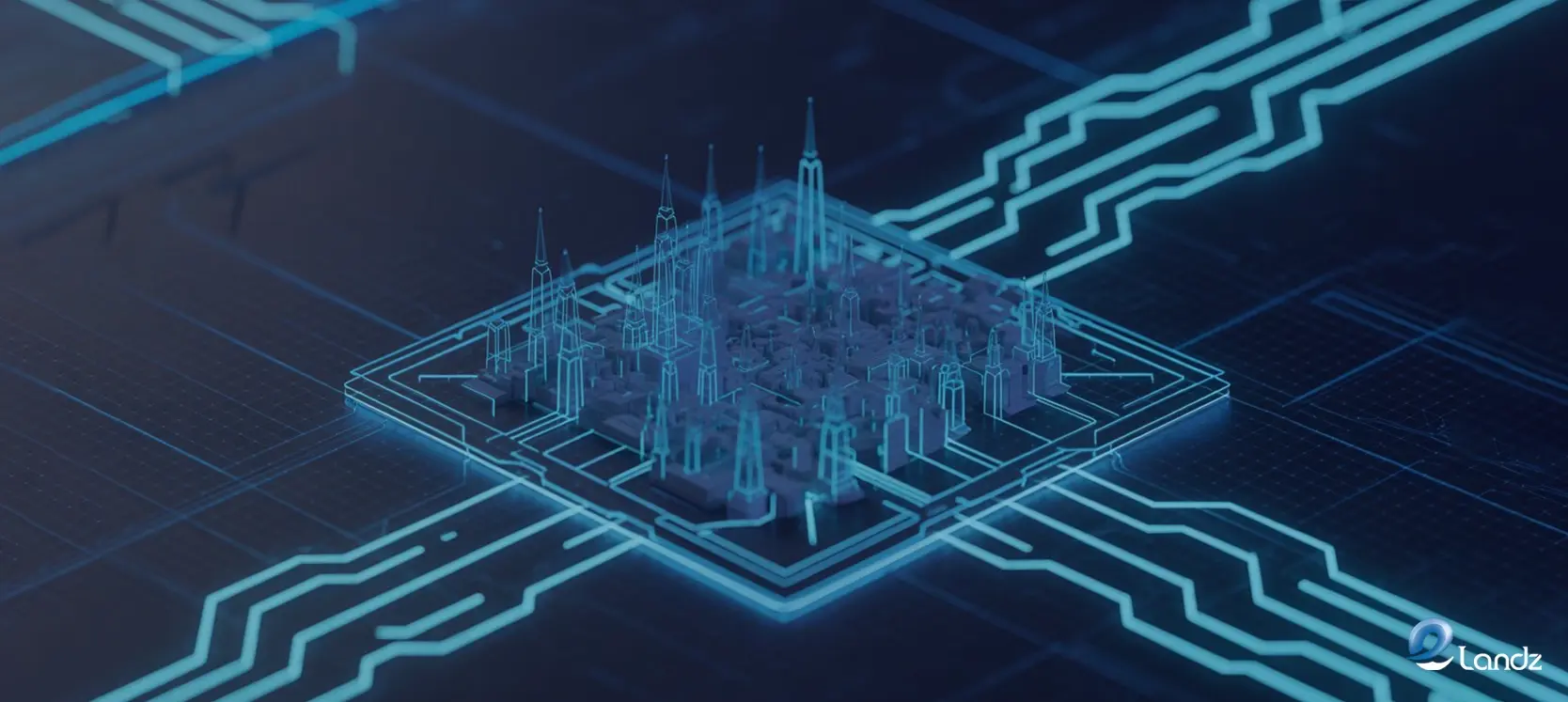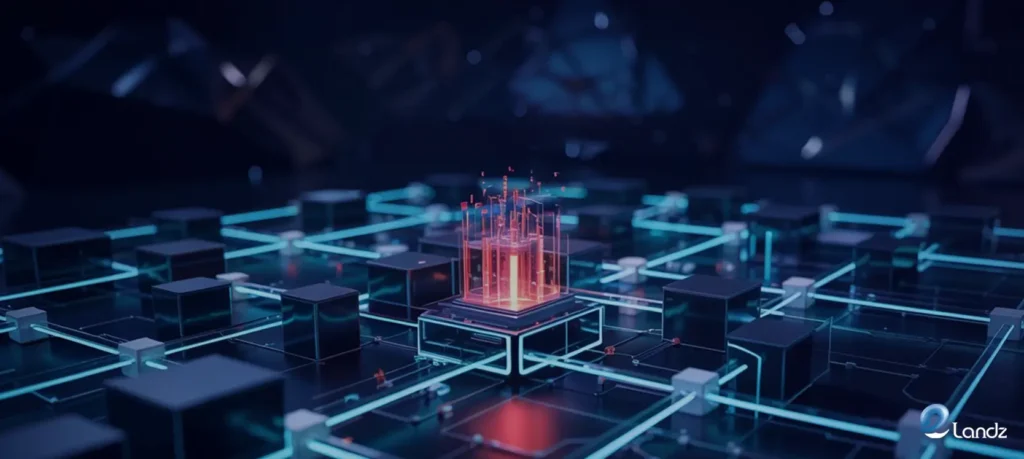
The Role of AI in Urban Planning for City Growth
16 Sep 2025Introduction
AI in urban planning is reshaping how cities are designed, managed, and experienced. With rapid urbanization, climate change, and rising social inequalities, traditional planning methods often struggle to keep pace.
Artificial intelligence offers a fresh approach, one that brings efficiency, sustainability, and inclusivity to modern city development. From analyzing transportation patterns to predicting environmental risks, AI has become a key tool for building smarter, more livable cities.
Why Urban Planning Needs a New Approach
More than half of the world’s population now lives in cities, and this number is expected to grow sharply in the coming decades. Urban centers face mounting challenges:
- Rising populations that strain housing, transportation, and public services.
- Climate risks such as flooding, heatwaves, and extreme storms.
- Social inequalities in access to food, healthcare, and infrastructure.
- Fragmented planning systems, where departments work in silos, make it difficult to adapt quickly.
Artificial intelligence offers a solution by turning raw data into actionable insights. Instead of relying on outdated maps and manual surveys, planners can now use real-time data from sensors, satellites, and mobile devices to create smarter strategies.
The Evolution of AI in Urban Planning

AI in urban planning has not appeared overnight. Its role has grown over the decades as technology has evolved.
Early 2000s: Limited Capabilities
In the early years, AI tools were mostly experimental, focusing on basic traffic simulations and predictive modeling. These efforts were promising but constrained by limited computing power and a lack of data.
Late 2010s: Big Data and IoT
With the rise of big data and Internet of Things (IoT) technologies, planners gained access to real-time streams of information from sensors, GPS devices, and mobile apps. AI could now process massive datasets, helping cities manage energy grids, transportation, and waste systems more effectively.
Today: AI + 5G Smart Cities
The rollout of 5G networks has unlocked even greater possibilities. Cities can now process data with minimal delays, making applications like digital twins, real-time traffic monitoring, and smart grids feasible on a large scale. This has transformed AI into a practical tool rather than a theoretical concept.
How AI Transforms Urban Planning
AI brings innovation to nearly every aspect of city planning. Below are the main areas where it is creating a meaningful impact.
Data Analysis and Digital Twin Technology
Digital twins are virtual models of cities that mirror real-life operations. They integrate data from IoT devices, traffic sensors, and weather systems to simulate urban environments. AI then uses these models to predict the outcomes of different policies or projects.
For instance, a city can test how changing bus routes might affect traffic congestion or how new green spaces could reduce urban heat. By experimenting in a virtual world, cities can save time, money, and resources while minimizing disruption to residents.
Smart Infrastructure and Utilities
AI-powered platforms make infrastructure more resilient and sustainable. Smart grids optimize electricity distribution, balancing renewable and non-renewable sources to reduce waste. AI-driven waste management systems predict collection needs, cutting costs and pollution.
Control rooms powered by AI can even predict equipment failures, allowing proactive repairs. This not only saves money but also improves the reliability of essential services like water supply and electricity.
Mobility and Transportation
Transportation remains one of the biggest challenges for modern cities. AI helps by analyzing traffic flow, public transit use, and pedestrian patterns. This leads to smarter traffic signals, optimized bus routes, and safer pedestrian crossings.
For example, in New York City, AI-powered computer vision is being used to monitor crosswalk conditions using dashcam footage. This helps prioritize repairs and improve pedestrian safety.
Urban Prototyping and Design
Generative AI allows planners to test urban layouts quickly. Tools like ChatGPT and Google’s Gemini can analyze images and detect features such as sidewalks, benches, and trees. These insights are valuable for measuring walkability, safety, and quality of life in different neighborhoods.
This democratizes access to planning tools, making it easier for smaller cities with limited budgets to apply advanced analytics without requiring deep technical expertise.
Real-World Examples of AI in Action
Let’s take a look at a few examples.
The Hangzhou City Brain, China
Launched in 2016, this AI-powered system optimizes traffic by analyzing data from cameras and sensors. It creates “green corridors” for ambulances and emergency vehicles, dramatically reducing response times. Over time, it has expanded to include disaster management, including typhoon tracking.
Venice’s MindICity, Italy

To manage the impact of 20 million yearly tourists, Venice created a smart control room that integrates data from cameras, IoT devices, and weather sensors. The platform monitors pedestrian flows, bridge congestion, and even tidal conditions. This helps protect infrastructure while ensuring smoother visitor management.
Helsinki and Citizen Engagement
AI is also transforming community participation. Platforms like UrbanistAI allow residents to suggest urban changes visually, making planning more interactive. Citizens can digitally redesign public spaces, giving decision-makers real input from local communities.
Cape Town and Equity in Transit Planning
Researchers at TU Delft used AI to explore fairness in transport planning. By applying different principles—such as prioritizing underserved neighborhoods—they showed how AI can help cities make more equitable decisions about transit expansions.
Implementation Strategies for Success
Organizations that succeed with AI and automation follow structured approaches that address both technical and human factors. Strategic planning ensures that AI investments deliver lasting value while maintaining employee trust and engagement.
Building an AI-Ready Foundation
Successful AI implementation starts with assessing current HR processes and identifying automation opportunities. Organizations should evaluate their data quality, technology infrastructure, and staff capabilities before selecting AI tools.
Change management becomes crucial when introducing AI systems. Employees may fear job displacement or resist new technologies. Clear communication about AI’s role, comprehensive training programs, and gradual implementation help build acceptance and enthusiasm.
Choosing the Right AI Tools
The AI market offers numerous HR solutions, from comprehensive platforms to specialized applications. Organizations should select tools that align with their specific needs, budget constraints, and technical capabilities.
Integration capabilities are crucial when selecting AI tools. Systems should work seamlessly with existing HR technologies, avoiding data silos and workflow disruptions. Cloud-based solutions often provide better flexibility and scalability than on-premise alternatives.
Establishing Governance and Oversight
AI governance frameworks ensure responsible implementation and ongoing management. These frameworks should address data privacy, bias monitoring, decision transparency, and human oversight requirements.
Regular performance reviews help organizations optimize their AI investments. Metrics should track both efficiency gains and employee satisfaction to ensure AI delivers comprehensive value.
Benefits of AI in Urban Planning
The integration of AI in urban planning offers wide-ranging benefits.
- Automates time-consuming tasks like image analysis or survey processing.
- Optimizes energy and resource use, reducing environmental impact.
- Encourages greater public participation in planning processes.
- Prevents infrastructure breakdowns through predictive maintenance.
- Improves disaster preparedness with accurate forecasting.
Challenges and Ethical Concerns

Despite its promise, AI in urban planning also raises critical issues that cannot be ignored.
Privacy Risks
AI relies on vast amounts of data, including from cameras and mobile devices. Without strict governance, this information could be misused for surveillance or sold to third parties. Cities must implement transparency and limit data collection to anonymized forms.
Bias and Inequality
AI systems are only as good as the data they are trained on. If training data is biased, results may favor wealthier areas over disadvantaged communities. This could worsen inequalities. To avoid this, datasets must be diverse, and models should be regularly audited for fairness.
Human Oversight
AI should support—not replace—human judgment. Decisions about housing, policing, or public services must remain accountable to communities. Transparent processes and opportunities for public feedback are essential.
The Future of AI in Urban Planning
The global AI urban planning market is projected to reach $54.8 billion by 2030, reflecting its growing importance. The next frontier will involve:
- Climate resilience: Using AI to predict flooding, heatwaves, and sea-level rise.
- Biodiversity monitoring: Leveraging AI to protect green spaces and urban ecosystems.
- Equity-driven tools: Embedding fairness directly into planning algorithms.
- Citizen-led design: Expanding platforms where residents actively shape urban spaces.
By combining human creativity with machine intelligence, cities can become more sustainable, equitable, and adaptable.
Conclusion
AI in urban planning is not just about technology. It’s about building better cities for people. By improving infrastructure, transportation, and environmental resilience, AI helps cities grow without sacrificing quality of life. However, its success depends on responsible use, ethical oversight, and active involvement from planners and citizens alike.
As cities continue to expand, embracing AI with caution and creativity can transform challenges into opportunities, creating urban environments that are efficient, sustainable, and fair for generations to come.
FAQs
Check out this FAQ section!
What is AI in urban planning?
AI in urban planning refers to the use of artificial intelligence tools and algorithms to design, manage, and improve cities. It includes applications like traffic optimization, digital twins, and smart infrastructure.
How does AI help with transportation in cities?
AI analyzes traffic data, public transit usage, and pedestrian flows to optimize routes, adjust traffic signals, and enhance safety. This reduces congestion and makes commuting more efficient.
Can AI make urban planning more inclusive?
Yes. AI tools, such as generative design platforms, enable citizens to participate in planning by visualizing and suggesting changes, making the process more collaborative and accessible.
What are the risks of using AI in urban planning?
The main risks include privacy concerns, bias in data, and over-reliance on automated systems. Without careful oversight, AI could unintentionally reinforce inequalities.
What is the future of AI in urban planning?
Future applications will focus on climate resilience, biodiversity protection, and equity-based planning. AI will increasingly work alongside citizens and planners to create smarter, fairer cities.


